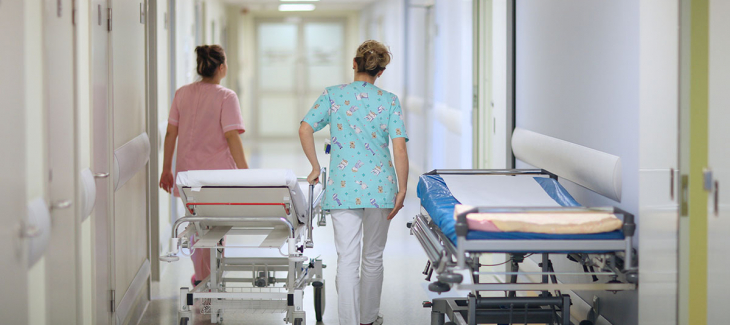- General
- Nurse Practitioners
- Registered Nurses
- Telehealth
- Career Trends
- Featured
- Legal
- News and Events
- Technology
- How To
- Procedures
- Training
- Employer News
- Candidate News
- Nursing
- Advanced Practice
Recent Posts
Most Popular
COVID-19: Scariest time to be a Nurse

Nurses are facing extreme levels of anxiety during the current COVID-19 crisis. Nurses who are treating COVID-19 patients are hands-on caregivers with a high risk of exposure to the virus. Many of them have underlying conditions such as asthma and therefore risk becoming critically ill themselves if they contract the virus. Nurses also fear transmitting the virus to their own family members.
Nurses across the country are protesting the lack of PPE while others are walking out on their jobs due to unsafe staffing ratios driven by a sudden influx in patients. It is the scariest time to be a nurse.
N95 is NOT a face mask
Currently, the Centers for Disease Control and Prevention recommends an N95 mask or higher respirator, face shield or goggles, isolation gown, and one pair of clean and non-sterile gloves as preferred PPE for COVID-19. However, they state that “face masks are an acceptable alternative” if N95 masks are unavailable.
In cases where hospitals have an inadequate supply of N95 masks and other PPE, nurses and other healthcare providers are forced to care for COVID-19 patients using less effective safety measures. This includes expecting nurses to reuse N95 masks for an entire shift (or multiple shifts), issuing general surgical masks instead of N95 respirators, and mandating that nurses enter the rooms of COVID-19 patients without any facial covering at all.
Nurses speak out
Kate Jones is a certified registered nurse anesthetist (CRNA) who voluntarily traveled to New York City to lend her expertise in providing assistance during the COVID-19 pandemic. “There is such a fear of even taking off your mask to drink, eat, and go to the bathroom,” Jones says. “You’re constantly running, and you’re overwhelmed with the fact that this invisible enemy is literally on every nook and cranny of the entire hospital. You seldom if ever see a cleaning person.
“A lot of people wear multiple gloves and sanitize them instead of taking them off at all. The cross-contamination is through the roof,” Jones adds. “It is impossible to maintain the level of safety that is necessary to not contaminate yourself with the virus.”
Hospitals and medical centers are not entirely to blame for the lack of adequate PPE. Manufacturers are overwhelmed by the sudden increase in demand for N95 masks and other PPE. PPE supplies that were meant to be reserved for healthcare providers were taken from hospitals for personal use by worried individuals. Other concerned citizens purchased N95 masks from retailers in excessive quantities.
In addition to infection containment challenges, hospitals are now inundated with critically ill patients. This has led to unprecedented staffing demands. “There’s so much chaos going on that it inhibits even experienced nurses from being able to think critically at an optimal level.” Jones states. “The system is bogged down, and many floors don’t even have the essential equipment to appropriately monitor their patients. It feels like complete pandemonium. Zero structure, plan, or organization.”
Jones also notes that nurses with no critical care experience are caring for ICU level patients: “On the frontlines, it’s important that they recognize that not all nurses have the same experience. Nurses are coming in with a multitude of backgrounds, not knowing that ICU care is truly the level of experience they need for all floors. That, coupled with the abnormally dangerous patient to nurse ratios and inexperienced nurses using ventilators and continuous blood pressure drips, it only makes sense that the mortality in NYC is so high!”
ANA Speaks Out
On March 11, 2020, the American Nurses Association (ANA) sent a letter to U.S. Vice President Mike Pence. The letter made four main requests. The first urged the federal government to work to improve the supply chain of PPE production. The second request was for the Administration and Coronavirus Task Force to include nurses in decision-making. The third was a request for more flexible licensure and telehealth requirements, allowing nurses to cross state lines to work without having to submit to the formalities of applying for a new state license. The fourth was an appeal to expand paid sick leave for “all healthcare workers who are quarantined due to COVID-19 exposure or contracted COVID-19 while working on the frontlines.”
Nurses can help by continuing to encourage everyone who can to stay at home, which is the most effective method for slowing the transmission of the novel coronavirus.
Nurses can also advocate that N95 masks be saved for direct care providers who really need it, and not be used by the general public. Cloth facial coverings are recommended for individuals outside of the healthcare system who must be out in public.
Jones recommends that family and friends who wish to support frontline healthcare providers purchase proper PPE for their loved ones to use in the field. This includes proper respirators with full face shields. “The hospital will give each nurse one N95 mask for five days, to swim in a petri dish of COVID in direct contact to the aerosolized virus,” she says. “It’s not appropriate or safe PPE for the environment.”
Above all, nurses need to support themselves and their colleagues during this time. Nurses who feel obligated to continue working bare the burden when other nurses refuse to work under these dangerous conditions. Jones emphasizes the concern that nurses who work under the intense pressure of COVID-19 will suffer later in their careers. “It’s impossible to witness mass casualties and not leave with imagery of both primary and secondary trauma. Healthcare workers are having to disconnect from their emotions in order to survive.”








Comments